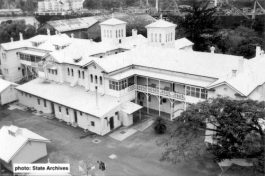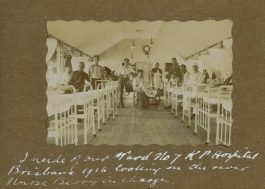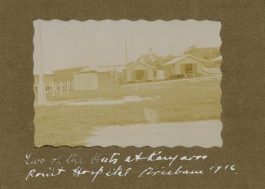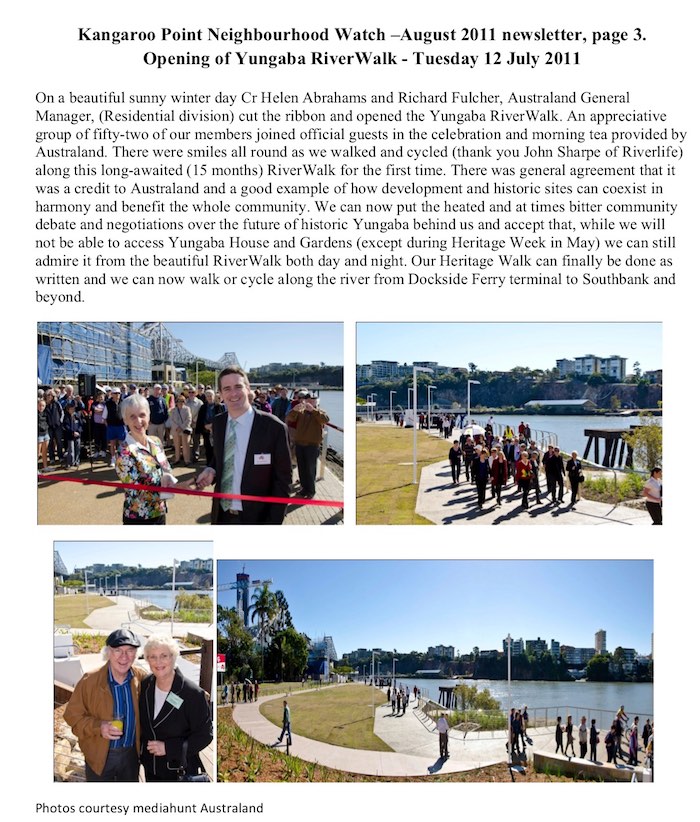YUNGABA : Land of the Sun – 102 Main Street, Kangaroo Point
The placename of the iconic Kangaroo Point colonial building generally referred to as Yungaba (land of the sun) recorded on the Qld Heritage Register is Yungaba Immigration Depot. It has alternative names of Immigration Barracks and No. 6 Australian General Hospital.

The Italianate/ Renaissance revival style building was designed by Queensland Government architect John James (J.J.) Clarke who also designed Customs House and The Treasury. It was constructed between 1885 and 1887 to provide accommodation for migrants before they moved into the community. It was used for this purpose for over a century, and was Queensland’s equivalent to New York’s Ellis Island.
During the Boer War and the two world wars it functioned as a hospital and reception centre for returning soldiers, being referred to as the Kangaroo Point Military Hospital. It was also used to repatriate South Sea Islanders from 1902 to 1906 and as a refuge for the destitute and homeless.

During the 1930s the building was used to house Story Bridge construction workers including the superintendent of works J.J.C. Bradfield. During the 1940s it became known as Yungaba.
Yungaba is symbolic of the high priority that was placed on immigration during the late 19th century and the manner in which the colonial and state governments provided for those needs. The state government’s program established Queensland as the immigration colony of Australia. The building demonstrates the principal characteristics of institutional buildings of that period in its symmetrical layout and decoration. In 1887 wharf facilities were provided, remnants of this can be still seen today.
After it ceased functioning as an immigration centre in 1995 the building has been the home of many community organisations such as BEMAC ( Brisbane Ethnic Music and Arts Centre), Australian Volunteers International and Austcare; as well as a popular function and conference centre.

Despite strong community protests and a high-profile Yungaba Action Group, the State Government sold the entire Yungaba site in 2009 to a developer (Australand) for medium density residential development conditional on the heritage-listed Yungaba house building and garden being preserved intact and uninterrupted river views from it be retained. Construction of a new multicultural centre on the back of the site was part of the agreement. This is now located at 100 Main Street and is the home of BEMAC and some businesses.
As part of the development, a River Walk for cyclists and pedestrians was built to extend from the existing walk from Dockside to Holman Street and Captain Burke Park. It was opened on 12 July 2011 and Yungaba House and gardens can be appreciated from the river.
An agreement was also made to open the foyer of the building to the public during Heritage Week in May for historical inspections by the public. To date (July 2018) this has not yet occurred as the developers have designated it as a “building site”. The only access available to the public at this stage is “open house” events for apartments in the three apartment blocks containing 140 apartments. The heritage-listed Yungaba House has now been turned into ten boutique apartments which are currently being sold.
For more details see the Queensland State Heritage Register https://environment.ehp.qld.gov.au/heritage-register/detail/?id=600245
Wikipedia https://en.wikipedia.org/wiki/Yungaba_Immigration_Centre
For more information on the Yungaba Action Group, watch The Story of Youngaba. Delene Cuddihy, a member of the Yungaba Action Group, talks about the history of Yungaba, an immigration depot that was built at Kangaroo Point, Brisbane in the 1880s. She also talks about the previous uses of the building and what the future may hold for the site. This is a Storylines Q150 digital story. This digital story was made by the State Library of Queensland with funding from the Queensland Government. It is a legacy of the Q150 celebrations in 2009.
https://www.youtube.com/watch?v=Bi5LAjrZjOc&t=10s
Yungaba Gardens Open House 2023
It was a long-awaited pleasure to finally be able to walk around the beautiful gardens of our heritage-listed Yungaba House and remember the many immigrants who started their life in Australia in what was then the Immigration Hostel established in the late 1880s.
While we could not enter Yungaba House itself as it now contains several private boutique residences, it was still possible to admire its beauty from various vantage points in the grounds.
Here are some pictures I took of the manicured gardens and the majestic Yungaba.
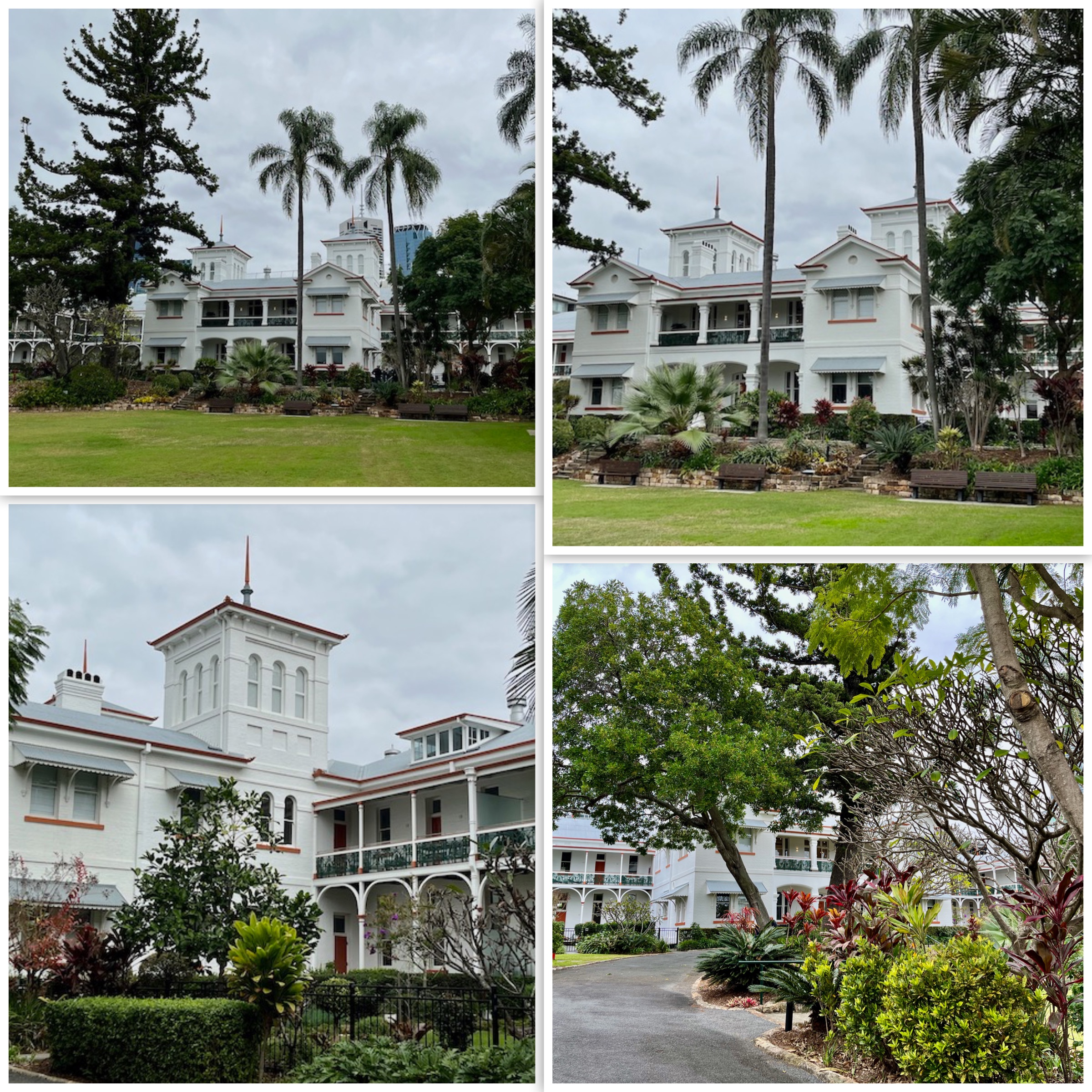
Reminiscing at Yungaba
A few days ago Christa and I met Paula Sutherland who had come to Australia from England with her family in February 1974 just after the floods and spent her first two weeks at Yungaba, the then Immigration Depot. Paula lives in Mudgee in NSW and had made contact via this website saying she was coming to Brisbane and would like to see Yungaba where she’d spent her first days in Australia as a seven-year-old.
We met Paula and her husband Adam on a warm, sunny afternoon in the Medley Café carpark and took them through Medley to Yungaba House.

Paula’s emotional ‘Wow’ said it all, she was visibly moved to be back where she started 49 years ago!

After taking many photos and a look at the remnants of the landing wharf where the immigrant ships had landed we went into Medley.

We showed them the history plaques on the wall and then had a lovely chat over coffee about the history of Yungaba, the river, Kangaroo Point and life in Brisbane.

A highlight was when Paula face-timed her mother Barbara on her phone and she told Christa about her memories of coming to Yungaba with her family in 1974. She said she had very happy memories of her two weeks at Yungaba.

They stayed in the family accommodation blocks which were separate buildings at the back of the main building, next to the laundry block and near a Story Bridge pylon.
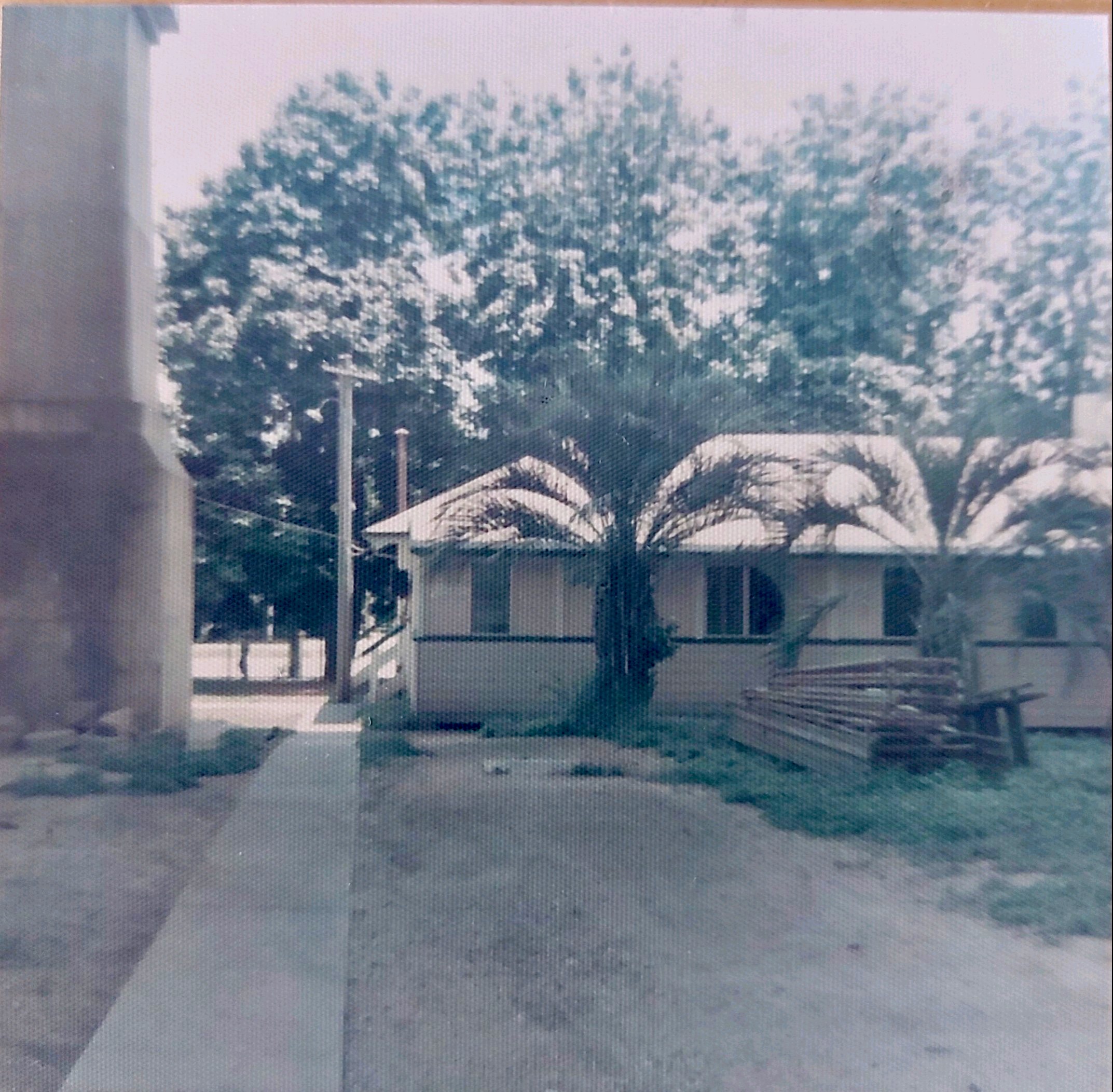
We then walked along the river walk towards Dockside and showed them the signs on the wall near the Bridgewater steps showing the height that the floodwaters came up to in the 1974 and 2011 floods.

Next up was a walk along Main Street past the Multicultural Centre to see the other side of Yungaba House. It was another emotional moment for Paula as she and Adam peered through the gates and tried to picture where the old buildings had been.
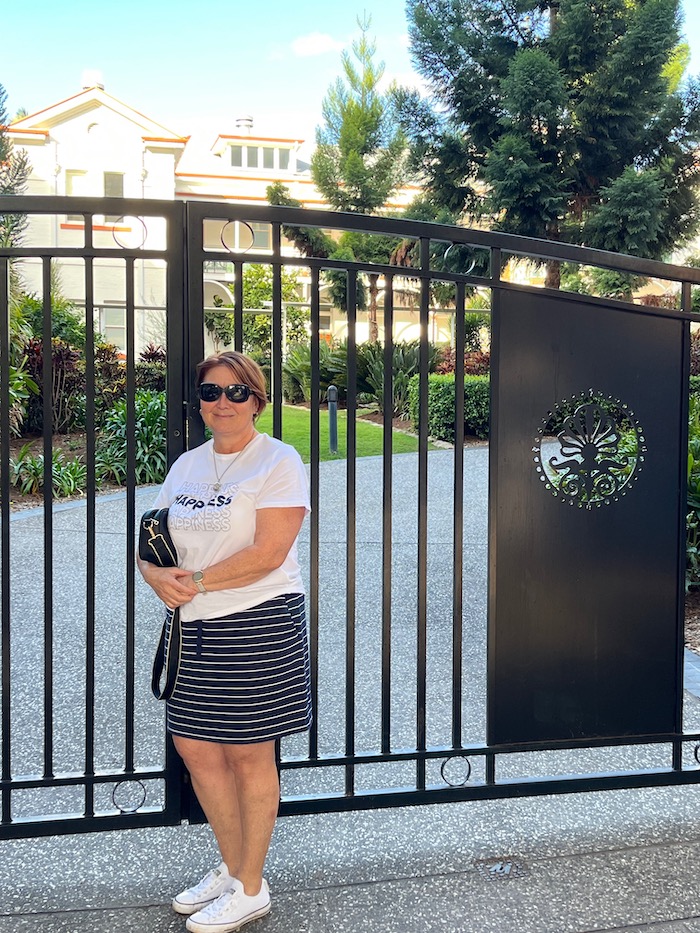
While we were standing there a car approached and the gates opened. We quickly walked in and took some photos and a closer look.

Then the car stopped and a man got out and came over to us asking if we were reminiscing and Paula told him that she’d stayed there with her family in 1974. To our amazement he said he had also arrived there with his family in 1952 when he was just a baby so had no actual memories of the place. What a coincidence! He’s now back where he started, an owner of one of the residences and lives there with his wife who came over and joined us.
After the memorable walk down memory lane we walked Paula and Adam back to their car and wished them a happy holiday in Brisbane and Stradbroke Island. They left happy about their discoveries.
John Gerard

